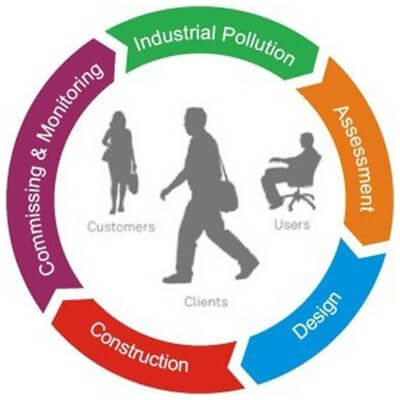

EIA refers to Environmental Impact Assessment and comprehensive procedure that is used to evaluate the potential environmental impact of a proposed project, enabling them to make informed choices and take appropriate actions to mitigate adverse effects or explore alternative options. Moreover, EIA is necessary to promote sustainable development, ensure environmental safety, and foster informed decision-making considering social, economic, and cultural factors.
Apart from this Environmental Impact Assessment (EIA) is used in several industries to assess and manage the potential environmental impacts of proposed projects, policies, or activities such as infrastructure development, the energy sector, mining and extractive industries, industrial and manufacturing projects, Agriculture and forestry, urban development and construction, tourism and recreation, waste management and much more. So we see that EIA is a crucial process to run any business, now the question is What are the stages of environmental impact assessment(EIA)? In this blog, we mention the process of EIA Certificate.
Screening is the essential first step in the EIA process cycle. It is the procedure of determining a project or activity if it falls within the scope of activities that require a comprehensive EIA study. Screening helps identify projects with potentially significant environmental impacts that need further assessment. Apart from this, the specific screening process may vary depending on the country, jurisdiction, and nature of the proposed project. Some nations may have standardized screening procedures, while others may offer specific instructions or allow discretion in the screening process.
For more details, please click METACORP
Scoping is a critical stage in the Environmental Impact Assessment License procedure that go along with the screening process. It involves a fully transparent and systematic examination of the proposed project to determine the key environmental issues and potential effects that must consider in the EIA study. The scoping stage supports to define the scope and boundaries of the assessment and sets the foundation for a comprehensive and effective EIA. The process of scoping is important for focusing the EIA study on the relevant environmental issues, setting the scope and boundaries, and ensuring the effectiveness of the assessment.
This stage of environmental impact assessment(EIA) involves the detailed systematic and comprehensive analysis of the potential environmental, economic, and social impacts of a proposed project. EIA Report should include an executive summary, project description, description of potential impacts, analysis of alternatives, proposed mitigation measures, monitoring and management plans, and a conclusion. The EIA report is typically prepared by environmental professionals based on data collected during stakeholders' consultations, investigations, and other sources. Apart from this EIA report can vary depending on the project’s scale, area, complexity, and the regulatory framework of the country region involved.
If you want to know more abot the EIA process, click HERE
Developing an application and conducting consultations are crucial steps in the procedure or gaining approvals or permits for the project. In this stage of environmental impact assessment(EIA), the report is given to the regulatory authority for the approval of the project application. EIA report clarifies by a regulatory authority to seek additional information. Usually in a consultation process where stakeholders can offer feedback and comments on the project proposal and the EIA report.
When it comes to decision-making for the EIA report it includes the public consultation process and application. On the other hand regulatory authority will decide whether to approve or request a modification, or reject the project proposal. Consulting with environmental professionals, engaging with relevant authorities, and seeking public input are integral parts of the decision-making process in the stage of EIA. The decision may be based on environmental, economic, social, and other factors and compliance with relevant laws and regulations.
After making a choice, regarding the Environmental Impact Assessment (EIA) project can move forward with implementation, subject to any constraints or demands outlined in the permission. Normally, the regulatory body will keep an eye on the project to make sure it complies with the requirements for approval and any created environmental management plans. These post-decision actions are crucial for effective project implementation and ongoing environmental management.
We hope this article on “What are the stages of environmental impact assessment(EIA)” has helped you in knowing about the topic. We at Metacorp try to help the businesses, organization, and people with consultancy services of various kinds of licensing or certifications.





We are the pioneers in offering environmental consulting services to our patrons, giving us the first mover advantage & keeping us ahead of our competitors.
Very experienced in filing, monitoring & submission of CDSCO Compliances, Drugs Manufacturing & sale guidelines, Environmental Impact Assessment, AERB consulting services, Pollution Control Board CTE & CTO Advisory Services, Waste Management Authorization from State Pollution Control Boards, Fertilizers & Insecticides Manufacturing, Wholesale & Import Compliances
